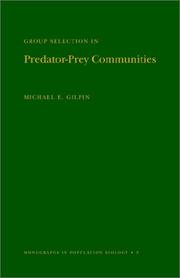| Listing 1 - 2 of 2 |
Sort by
|
Book
ISBN: 4431564853 443156487X Year: 2016 Publisher: Tokyo : Springer Japan : Imprint: Springer,
Abstract | Keywords | Export | Availability | Bookmark
 Loading...
Loading...Choose an application
- Reference Manager
- EndNote
- RefWorks (Direct export to RefWorks)
This book treats ensembles of Young diagrams originating from group-theoretical contexts and investigates what statistical properties are observed there in a large-scale limit. The focus is mainly on analyzing the interesting phenomenon that specific curves appear in the appropriate scaling limit for the profiles of Young diagrams. This problem is regarded as an important origin of recent vital studies on harmonic analysis of huge symmetry structures. As mathematics, an asymptotic theory of representations is developed of the symmetric groups of degree n as n goes to infinity. The framework of rigorous limit theorems (especially the law of large numbers) in probability theory is employed as well as combinatorial analysis of group characters of symmetric groups and applications of Voiculescu's free probability. The central destination here is a clear description of the asymptotic behavior of rescaled profiles of Young diagrams in the Plancherel ensemble from both static and dynamic points of view.
Mathematics. --- Group theory. --- Topological groups. --- Lie groups. --- System theory. --- Probabilities. --- Mathematical physics. --- Mathematical Physics. --- Topological Groups, Lie Groups. --- Group Theory and Generalizations. --- Probability Theory and Stochastic Processes. --- Complex Systems. --- Statistical Physics and Dynamical Systems. --- Limit cycles. --- Limit cycles --- Cycles, Limit --- Differential equations --- Limit cycles of differential equations --- Physical mathematics --- Physics --- Probability --- Statistical inference --- Combinations --- Mathematics --- Chance --- Least squares --- Mathematical statistics --- Risk --- Systems, Theory of --- Systems science --- Science --- Groups, Lie --- Lie algebras --- Symmetric spaces --- Topological groups --- Groups, Topological --- Continuous groups --- Groups, Theory of --- Substitutions (Mathematics) --- Algebra --- Math --- Philosophy --- Differentiable dynamical systems --- Topological Groups. --- Distribution (Probability theory. --- Statistical physics. --- Distribution functions --- Frequency distribution --- Characteristic functions --- Probabilities --- Statistical methods --- Dynamical systems. --- Dynamical systems --- Kinetics --- Mechanics, Analytic --- Force and energy --- Mechanics --- Statics

ISBN: 0691081573 0691081611 0691209464 Year: 1975 Publisher: Princeton (N.J.) : Princeton university press,
Abstract | Keywords | Export | Availability | Bookmark
 Loading...
Loading...Choose an application
- Reference Manager
- EndNote
- RefWorks (Direct export to RefWorks)
Many animals regulate their population density by patterns of behavior that would be easy to explain if the forces of natural selection acted to optimize group properties. But Darwinian selection acts on individuals, not groups, and most simple theories have shown group selection to be too slow ever to oppose individual selection successfully.In this book Michael Gilpin presents a model, based on predator-prey dynamics, wherein nonlinear effects are important, so that small advantages to the selfish individual are nonlinearly amplified into disaster for his group. The result is that group selection can be rapid and powerful. Of course many instances of apparent group selection can be explained by kin selection; in other cases, close examination reveals that seemingly altruistic behavior directly benefits the individual genotype as well as the group. The value of the monograph is that it provides a robust model in which group selection, pure and unadulterated, can be seen to work.
Group selection (Evolution) --- Predation (Biology) --- Mathematical models. --- Populationsekologi. --- evolution. --- Group selection. --- Communities, Predator-prey --- Dynamics, Predator-prey --- Interactions, Predator-prey --- Predator-prey communities --- Predator-prey dynamics --- Predator-prey interactions --- Predator-prey relations --- Predator-prey relationships --- Predator-prey systems --- Predators and prey --- Predatory behavior (Biology) --- Predatory-prey relationships --- Prey and predators --- Prey-predator relationships --- Preying (Biology) --- Relations, Predator-prey --- Relationships, Predator-prey --- Systems, Predator-prey --- Animal ecology --- Animals --- Parasitism --- Evolution (Biology) --- Population biology --- Philosophy --- Creation --- Emergence (Philosophy) --- Teleology --- Food --- Garr-Saunders, A. M. --- Gilpin, M. E. --- Levins, R. --- MacArthur, R. H. --- Maynard Smith, J. --- Plague system. --- Rosenzweig, M. L. --- Totentanz system. --- Watt, K. E. F. --- Wynne-Edwards, V. C. --- aggression. --- dominance: ecological. --- fitness. --- gene flow. --- interference. --- limit cycles. --- optimal population density. --- predator migration. --- self-stabilization. --- sensitivity analysis. --- sexual reproduction. --- territoriality. --- yellow fever. --- zero isocline/isosurface.
| Listing 1 - 2 of 2 |
Sort by
|

 Search
Search Feedback
Feedback About UniCat
About UniCat  Help
Help News
News